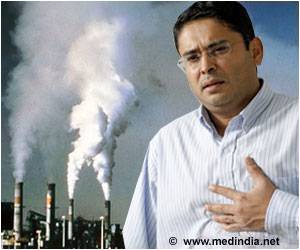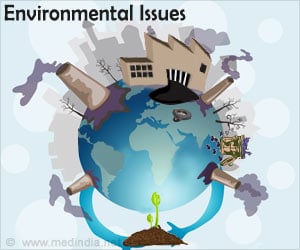The ATS recommended standards for O3 and PM2.5 are based on scores of national and international epidemiological, animal and human exposure studies.

‘The more protective O3 standard accounted for about 75 percent of the estimated health benefits due to a greater number of metropolitan areas with O3 concentrations above the ATS recommendations.’





They found that meeting a 0.060 parts per million (ppm) 8-hour standard for O3, rather than the EPA's 0.070 ppm standard, and an 11 micrograms per cubic meter (μg/m3) annual standard for PM2.5, rather than the EPA's 12 μg/m3 standard, would each year save 9,320 lives, reduce serious health events (morbidities), such as heart attacks, hospital admissions and emergency room visits, by 21,400, and decrease "adverse impact days," during which people may not be able to work, go to school or otherwise be physically active because of severe breathing problems, by 19,300,000 days. "While there is information available about counties in the United States that exceed EPA air pollution standards, there has not been a similar source of information about how that air pollution actually affects the health of people living in those areas," said lead study author Kevin Cromar, PhD, director of the Air Quality Program at the Marron Institute of Urban Management and assistant professor of population health and environmental medicine at the NYU School of Medicine.
The ATS recommended standards for O3 and PM2.5 are based on scores of national and international epidemiological, animal and human exposure studies. The EPA sets standards for six principal air pollutants to meet its obligation under the Clean Air Act to protect the health of the American public, including vulnerable populations, by an adequate margin of safety. In addition to ozone and particulate matter, the other pollutants are lead, carbon monoxide, nitrogen dioxide and sulfur dioxide.
Dr. Cromar said that most studies have looked at only one air pollutant. By including the two most important air pollutants in the analysis, the new study "gives policy makers and local air quality managers a much better picture of what is going on." Overall, the study found that the more protective O3 standard accounted for about 75 percent of the estimated health benefits due to a greater number of metropolitan areas with O3 concentrations above the ATS recommendations.
The researchers used the same software that the EPA uses to conduct regulatory cost-benefit analysis to estimate the health benefits of more protective standards for O3 and PM2.5. Data inputted into the program came from census tract information, 19 large national or multi-city studies that assessed the health impacts of the two pollutants, and a network of air monitors that the EPA relies upon to determine if states and counties are meeting air quality.
Advertisement
The ATS and Marron Institute expect to update the report annually. The report and an online tool with searchable information can be found at http://www.healthoftheair.org/. The online tool includes information about whether a metropolitan area meets EPA and ATS-recommended standards for each of the two pollutants and estimates the health benefits, for each pollutant, of meeting ATS recommended standards.
Advertisement
He added, "Equally important, state and local policy makers can use the online tool to better understand the nature of their air pollution problem so they can consider the best solutions for addressing their particular problem and improving the public's health."
Source-Medindia










